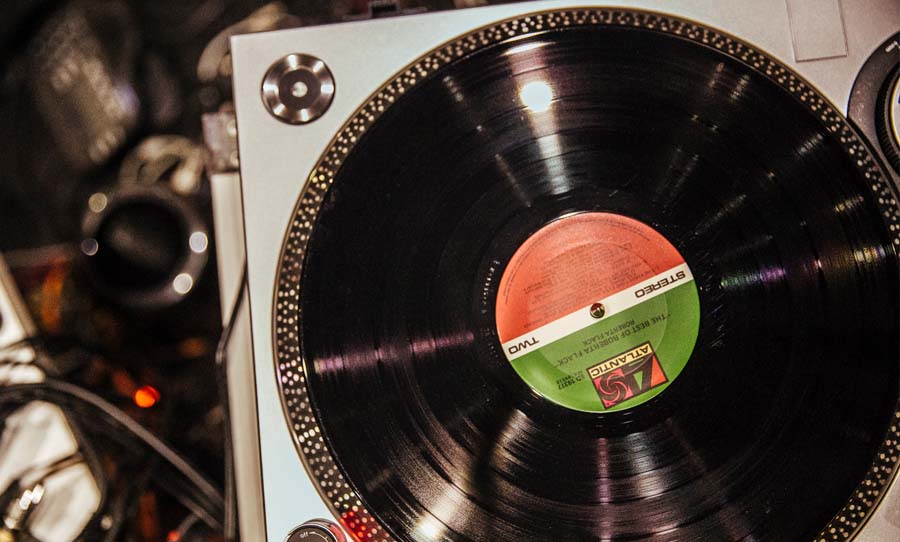In the past few years, we have seen a huge resurgence in vinyl as a format worldwide. Last year in Australia alone, $15.1 million worth of vinyl was bought by hungry consumers – both old and young. One only has to look towards bands such as King Gizzard and the Lizard Wizard, who release limited runs with different colour variations (which can sell to upwards of $500 per record), to make sense of this. But more often than not, a local band you love is looking to or has pressed a vinyl record.
We live in a digital world – music is at our fingertips, but bands are still pressing records – get used to it; however, compared with digital formats, mastering for vinyl comes with its own set of challenges.
There’s no denying vinyl has had a huge resurgence, however, the task of mastering for vinyl isn’t quite as simple as it is for digital formats like MP3. Let’s take a closer look at the process.
Before we start, I’d like to clarify a few terms.
Lathe – The lathe is a term for the Vinyl Disk Cutting machine. The term ‘lathe’ accommodates all parts of the machine.
Lacquer – An aluminium disk coated in nitrocellulose lacquer which is the medium cut into by the cutter head.
Cutter Head – The cutter head houses the cutting stylus. The cutting stylus moves from left to right at a speed constant to the waveform to cut information into the Lacquer.
Styli/Stylus – The tip of a needle – whether a cutting needle or a playback – with a cutting needle, the tip is often made of sapphire or ruby (as the lacquer is a softer substance than a PVC record). On a playback needle, the stylus is usually made from diamond. ‘Styli’ is the plural of stylus.
Land – The space between grooves. Ideally, the more land, the less likely that grooves will run into each other.
Cutting
The cutting stage is the first step in making a record. To put it simply, the volume of a record is dependant on the length of the program, and the amount of sibilance present in the master. It makes sense if you think about it – there is a finite amount of space on the surface of a record, and the grooves need space between them otherwise the playback styli would constantly skip. A shorter record can be cut louder as the cutting engineer can space the grooves further apart.
With a shorter program, the engineer also doesn’t need to worry about running of out physical space and can fret less about grooves over cutting – that is, grooves running into each other, causing either the record to skip or distort.
Making the Final Cut
There is a lot of discussion about the ‘warm’ sound of vinyl. A lot of this can be attributed to the mediums’ ability to reproduce high frequencies accurately, mostly due to the cutter heads ability to cut sustained high frequencies.
In the mastering stage, the engineer will need to limit the high end slightly in order for the cut to be as loud as possible. Such high frequencies (say, above 7K) cause the cutter head to heat up and potentially overload – the higher the frequency, the higher the voltage needed to cut. We’re talking about a lot of voltage here – in order to cut 12Khz, the needle has to move 12,000 left to right per cycle. That’s pretty fast.
In cases where the mastered tracks have a bit too much high end, cutting engineers employ an acceleration limiter. This limiter is somewhat similar to a de-esser, but is specifically designed for vinyl cutting. The acceleration limiter has a fast attack like a de-esser, but is designed to keep the grooves at a nominal width by reducing the volume of overall high-frequency material, rather than just to attenuate specific frequencies.
It’s more of a brute force tool constructed to both save the cutting head from overloading and save the playback needle from jumping from one groove to another. As most acceleration limiters cannot be fine-tuned such as a de-esser could be, cutting engineers tend to use these sparingly as to prevent too much high end loss.
While it is true that one can simply turn up the playback amplifier, a loud cut increases the noise floor ratio of a record. There is inherent noise present when running a needle through a groove – bits of dust or slight scratches present themselves as pops or crackles and there is always surface noise, which is just the sound of the stylus moving through a groove. Cutting the record louder minimises the chance of the listener being able to hear these vinyl artefacts.
Be Phased About Phasing
When mastering for a digital release, the mastering engineer doesn’t really need to worry about phase – this should have been fixed in the mix, and if not, it’s no big issue if the mix sounds good. When mastering for vinyl, however, incorrect phase is a pretty big deal. When phase is aligned, the cutting needle will move from left to right along the groove, as is designed to. When something is out of phase however, the cutter head will move may jump out of the groove, or cut such a narrow groove that the playback stylus will be forced to jump grooves (causing a skip in the playback).
This is even more important in the low end – say from about 500Hz downwards. If the cutting engineer receives a track that has significant low end phase, they will use an elliptical equaliser – an EQ that will mono anything from a specific frequency. The lathe I use has the options of using an elliptical EQ mono-ing downwards from 300Hz or 150Hz.
With a lot of modern rock music, this isn’t huge issue- bassier instruments such as the kick drum or bass guitar are often panned to the centre and thus mono-ing these frequencies has little to no effect – but for electronic tracks or any mix that has panned bass that is critical to the song, this can entirely ruin a mix. Make sure your bass frequencies are in phase!
Let it Breathe
When tracks are compressed or limited heavily for a digital release, there seems like there’s no time to breathe. This ‘breathing time’ is essential for a vinyl release as the cutting engineer can often cut louder if there are more dynamics in a mix. To put it simply, the louder a section of music, the more space it will take up on the record.
Quieter sections of songs need less groove spacing, or ‘land’. A hard limiter will bring the ‘quieter sections’ up in volume which will take up more room on the lacquer. So, a master with quiet sections allows for the louder sections to be.. well, louder – and take up the space they need so the more ambient passages can take up less space.
Joe Carra of Crystal Mastering is well at ease with mastering for vinyl. I’ve been lucky enough to see the innards of the mastering suite at Crystal Mastering, and it truly is a sight to behold – by audio nerds and musicians alike. Close to more than half of the work Crystal receives are tracks needing a digital and a vinyl master. Joe gave me a quick rundown of his methodology and process when it comes to mastering for vinyl.
“When I’m mastering for vinyl, I’m fully aware that it’s not necessary to have the average level of the track as loud as a digital master. So generally I’ll switch off any limiters, and back the overall level off a few dB. I’ll also have a good listen to the low frequency content of the track and see if I need to mono any of the bass. If the mix also has a lot of subsonic content, I may be inclined to shave a little off for the vinyl master, but I always try and leave as much subs as I can. Excessive top end can also pose a problem, so if there’s a little more sibilance than usual, I’ll tuck that in a bit.”
If you’re going to the effort (and cost) of putting a record out, it makes sense to try to get the best result. Joe suggests that if you can “provide the cutting engineer with a master that has a bit more dynamics”, the finished product will “ultimately sound better [from] all the little tweaks you can do in mastering”.
The cutting engineer will always try to cut as loudly, clearly and as close to the master as they can, but the imperfections of vinyl will always appear in any record – if you listen for them (crackles, pops, inner groove distortion etc). It’s a medium that seems to have stood the test of time, and doesn’t appear to be going anywhere any time soon.


